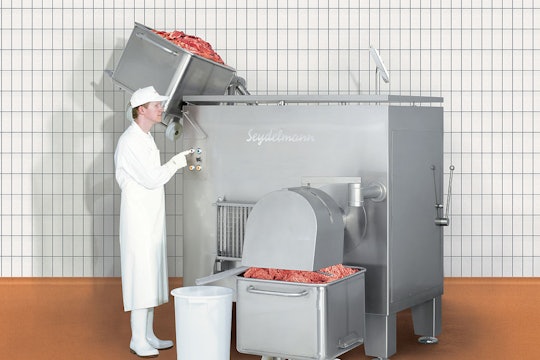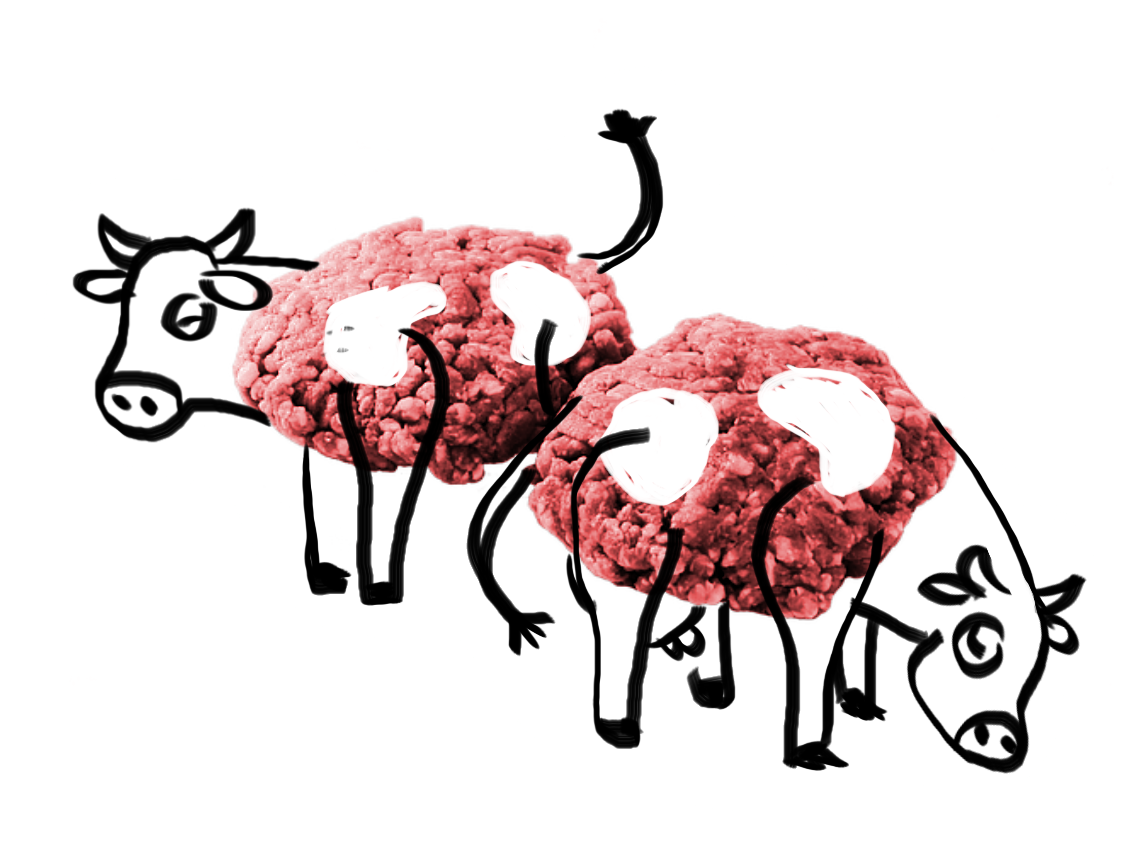

Produced in partnership with New Harvest
It's easy to overlook where our meat comes from
Inside the long, invisible supply chains transporting meat from slaughter to supermarket
Despite the growing awareness of the ethical and environmental questions that surround eating animals, the global meat industry is thriving. In the past 55 years, worldwide production of meat increased nearly 5-fold—in 2016, almost 330 million tons of meat were produced globally, compared to 71 million tons in 1961. Almost half of it came from Asia, which became the world's primary meat producer in the early 1990s.
But American businesses make up a hefty percentage of the meat producers. The United States is the world's largest producer of beef and poultry, tallying over 12 million tons of beef and almost 20 million tons of chicken meat products in 2016 alone. The United States is also the largest consumer, the largest importer and the fourth-largest exporter of beef in the world. If you live in the United States, there is a high chance that the chicken, beef, and pork you see in your local grocery store comes from Arkansas and Colorado, home to the two biggest American meat processing companies, JBS USA and Tyson Foods Inc. These giant corporations are involved in both slaughtering and processing, including packaging and distribution. Because these company supply chains have grown so efficient, consumers don't often have to think about what meat is, or how it gets from the farm to their kitchen.

Allan Lasser
It's easy to overlook that the neat, plastic-wrapped hamburger you find in the freezer aisle begins as an animal. In living animals, a pumping heart supports the circulation of oxygen and nutrients in the blood, allowing the efficient use of carbohydrates to produce the energy used to contract and relax muscles. The circulatory system also ordinarily transports cellular waste away from muscles, preventing its accumulation. But after an animal dies, cells no longer receive oxygen, and a process called anaerobic glycolysis begins. To produce energy, muscle cells break down a stored carbohydrate called glycogen, creating acid as a byproduct. This contracted state of muscle fibers—a permanent stiffness—is called rigor mortis.
Rigor, and its resolution, are very important in meat technology. How and when the rigor develops has a profound effect on the tenderness and juiciness of meat. As the cells acidify, enzymes that break down protein structures activate, weakening the bonds that hold muscle fibers together, softening the meat. That's why it's common for slaughterhouses to store meat for extended periods of time before selling it, a practice known as resolution, conditioning, aging, ripening or maturing. Meat frozen immediately after slaughter doesn't go through this process, and remains considerably tougher.
The amount of time required for optimal tenderizing can vary depending on the type of meat. For example, it takes about four days for pork meat to become noticeably softer and tenderer, but double that for beef, veal, and rabbit. The fast pace of large-scale industrial meat production pushes factories to shorten the time spent conditioning to distribute the product sooner, usually within three days of slaughter. To compensate, factories sometimes choose to further modify the muscle structure with additional processing steps, such as applying physical force, high pressure, electrical stimulation or ultrasonic waves, or by adding salts and plant-derived enzymes to achieve more efficient protein denaturation and tenderer meat.
The availability of refrigeration has also changed the meat industry dramatically. Keeping meat cool helps stop the growth of pathogenic bacteria, preventing it from spoiling and making people sick. Although the muscle of a slaughtered animal is essentially sterile and pathogen-free, the same isn't true of animals' hides and guts. During butchering, there's a high chance of contaminating meat with pathogens naturally present on the surface of animal’s body. This makes prompt refrigeration critical for preventing the growth of dangerous bacteria. Bacteria grow most rapidly in the range of temperatures between 40 and 140°F (4 to 60°C)—so the warmer the meat is, the faster it will spoil.
In the long run, spoilage is essentially inevitable unless meat is frozen solid. Lowering the temperature progressively slows bacterial growth, but doesn't stop it completely. According to early observations, meat develops an off-putting odor in three days when kept at 20 °C, in ten at 5 °C and in 20 days at 0 °C. That's also why it’s important to thaw frozen meat slowly, either in the fridge or in a cold water bath—rapid increase in temperature can reactivate bacteria that were unable to grow in the cold, revamping their growth and becoming a health hazard. Refrigeration and thawing can also impact both water retention and water loss, changing both the quality and look of the product. Generally, the faster the meat is chilled and cut after slaughter, the better it retains water, looking tastier to potential buyers.
After meat is refrigerated and packaged, it's transported to distributors, and from there to grocery stores, butcher shops, and households. While frozen meat has been widely available since the 1930s, better control over storage temperatures now allows chilled “fresh” meat to be shipped long distances. Nowadays, packing meat into a pouch and removing all air using a vacuum chamber is the most commonly used method of transporting meat along the production chain. But while conventional plastic vacuum packaging does extend the shelf life, it comes at the cost of visual appeal. While low oxygen content slows down the growth of certain types of bacteria, it also affects the rate of red meat oxidation—which can make red meat change color from cherry-red to purple-red or grayish-brown. The solution is to use controlled or modified atmospheric packaging (MAP), where, instead of simply removing all gases, gas composition inside a sealed MAP bag is artificially modified to allow meat to stay visually attractive for longer. For packaged red meat, the solution adopted in Norway and Canada is to add carbon monoxide to the mix, which can help improve color stability and prevent red meat from turning brown.
So while you may not realize it, you've probably been breathing in a little puff of laboratory research and innovation every time you open a supermarket pack of chicken thighs or a vacuum-sealed steak.
